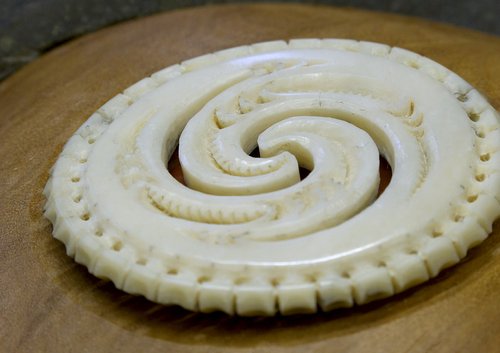
I tēnei whārangi On this page
Our work
We care for an ever-growing collection spanning over 120 years of Aotearoa New Zealand’s sound and moving image history.
We collect and catalogue film reels, video tapes, sound records, and store them in climate-controlled vaults. Our experts work against time to preserve original nitrate film, television broadcast tapes and sound recordings, before they degrade. We digitally preserve audiovisual material to ensure that it stands the test of time for future generations.
We facilitate access to the collection for researchers, the media industry, the museum sector and anyone who wants to discover the audiovisual stories of the past. We manage rights and clearance processes so that audiovisual content from the archive can be re-used and shared wherever possible.
Ngā Taonga is committed to the principles of Te Tiriti O Waitangi. We actively develop relationships with whānau, hapū, iwi and Māori organisations to ensure appropriate long-term care of and access to sound and moving image taonga.

Ngā Taonga vaults at Motutawa Avalon
The collection
We care for a diverse collection of over 800,000 items, dating back to 1894. The collection includes film and television, sound and radio recordings sourced from:
- The New Zealand Film Archive, Ngā Kaitiaki O Ngā Taonga Whitiāhua
- The Sound Archives, Ngā Taonga Kōrero
- The Radio New Zealand Archive
- The Television New Zealand Archive
- The NZ Broadcasting Service Mobile Unit collection
- The Taonga Māori collection
- Many other collections including oral histories, home movies, and experimental works.

Frame from Colour Cry by Len Lye
Our story
Ngā Taonga Sound & Vision is the operating name for the New Zealand Archive of Film, Television and Sound, Ngā Taonga Whitiāhua Me Ngā Taonga Kōrero.
Ngā Taonga Sound & Vision was formed by the amalgamation of the New Zealand Film Archive Ngā Kaitiaki O Ngā Taonga Whitiāhua, Sound Archives Ngā Taonga Kōrero, and the Television New Zealand Archive between 2012 and 2014.
We’re an independent charitable trust, governed by a Board of Trustees and funded by Manatū Taonga, the Ministry for Culture and Heritage and other generous supporters including The Lottery Grants Board and Te Māngai Pāho.
Our national office is located in central Wellington. We also have a facility in Avalon Motutawa, Lower Hutt but this is primarily a preservation facility and visits are only by special arrangement.
Ngā Taonga is involved in Tāhuhu, alongside Archives New Zealand and the National Library of New Zealand.
Identity

Ngā Taonga logo
Our name represents a continuity between past and present. It draws from the names of the organisations that came together to form this new integrated archive.
Our logo, along with its Takarangi double spiral, evokes a waka huia – a box for storing a person’s most prized possessions – whilst also visually echoing various types of sound and vision: an eye, an ear, a film reel, transmission waves, or a record spinning.
Te Kāmata Kura
E whakatinana ana a Te Kāmata Kura i te whakahirahira o ngā taonga tuku iho i ngā kohinga ataata-rongo e purihia nei e Ngā Taonga. He kupu whakarite a kāmata arā te kāmaka, he kupu tawhito e pā ana ki te tihi o te rau me te kura, te tae whakahirahira e tohu ana i te mana.
This manea stone, Te Kāmata Kura, was created by Bernard Makoare, a prominent artist from Te Tai Tokerau to mark the Archive’s move to the National Library building in September 2019. Bernard’s work reflects his heritage, environs and the importance he places on whanaungatanga and relationships between people, places and significant objects. Te Kāmata Kura is currently in the main foyer of the National Library building, Molesworth Street, Wellington.
Te Kāmata Kura symbolises the rich heritage contained in the audiovisual collections cared for by Ngā Taonga Sound & Vision. Kāmata is a play on kāmaka, a traditional term that refers to the tip of a leaf and kura (red) is a significant colour of status and a metaphor for mana.
In the video below, Bernard Makoare talks about the stone and its making.
Artist Bernard Makoare discusses Te Kāmata Kura.
Hero image: Te Kāmata Kura by Bernard Makoare.